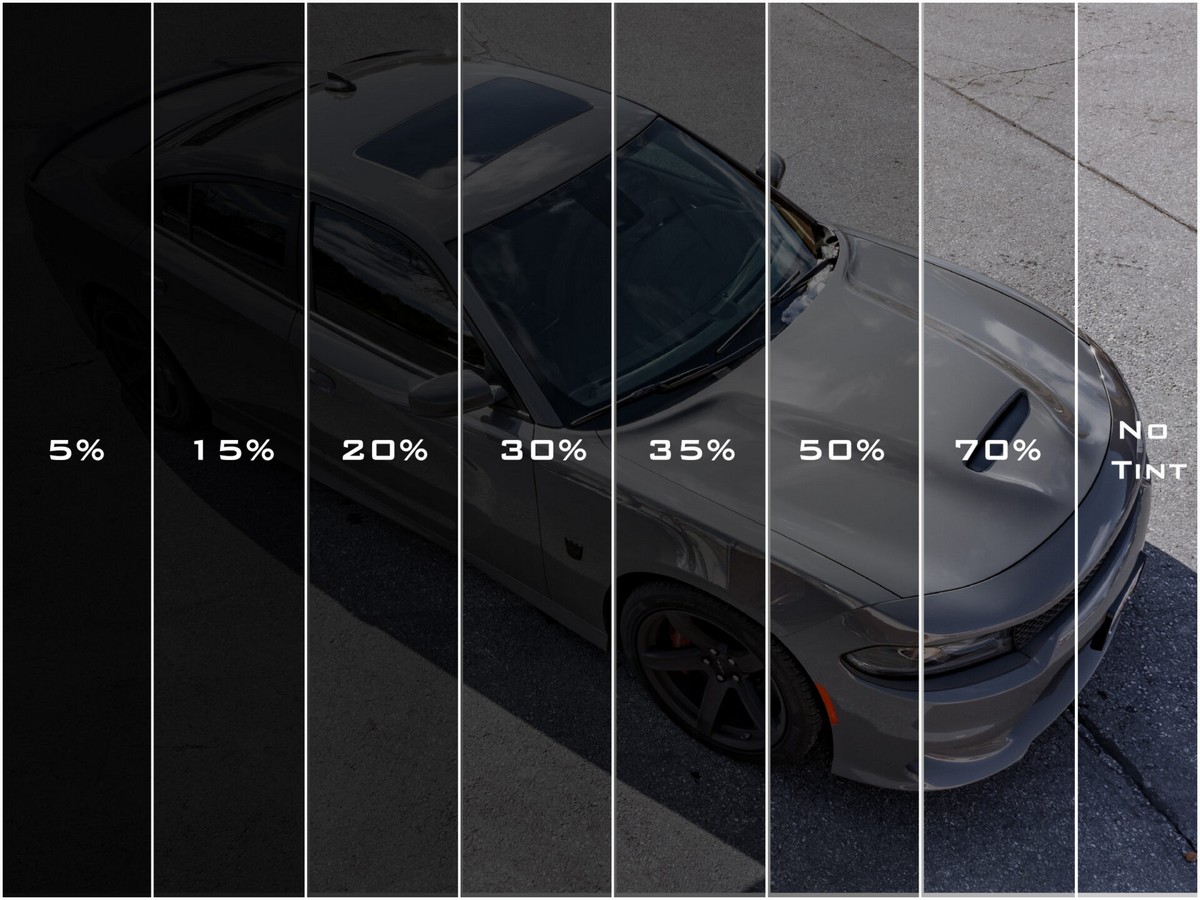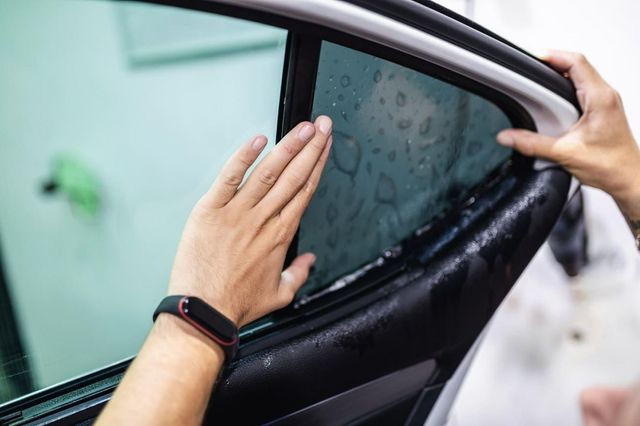How Window Tinting Can Minimize Glare and Improve Driving Safety
Window Tinting Options: Discover the Right Shade for Your Style and Needs
Picking the proper window tint for your car includes a cautious factor to consider of various variables, consisting of individual appearances, useful requirements, and legal limitations. With options ranging from light tintss that use very little personal privacy to darker tones that improve seclusion, the choices can be frustrating. window tinting. Understanding the ramifications of noticeable light transmission (VLT) percentages and the advantages of various materials is crucial in making an educated choice. As you consider your alternatives, you may wonder exactly how these elements interplay to develop not just an appearance, yet a tailored experience on the road.
Recognizing Window Tinting Levels
When considering window tinting, it is important to recognize the various levels of tint available, as they considerably affect both aesthetic appeals and performance. Window tinting is classified based upon Noticeable Light Transmission (VLT) percents, which suggest the amount of light permitted to pass with the glass. The VLT percentage can range from extremely light (over 70%) to extremely dark (listed below 5%)
The main levels of tint consist of clear, which offers UV security without altering exposure; light tint (over 50% VLT), which somewhat reduces glare while keeping exposure; tool tint (around 35% VLT), striking an equilibrium between personal privacy and light transmission; and dark tint (below 20% VLT), giving significant personal privacy and heat reduction yet restricting exterior exposure.
Recognizing these levels is critical as they can impact driving safety, legal conformity, and personal comfort. In addition, local guidelines often dictate acceptable tint degrees, differing by state or town. Consequently, before choosing a color, it is suggested to study and make sure adherence to these regulations while taking into consideration personal choices for design and functional benefits.
Popular Tint Tone Explained

One of the most preferred options is the traditional dark tint, usually varying from 20% to 5% VLT (Visible Light Transmission) This shade supplies optimum personal privacy and a sleek, advanced appearance. It effectively blocks UV rays and warmth, making it ideal for warm environments, though it might limit exposure in the evening.
Conversely, lighter shades such as 35% or 50% VLT supply an extra subtle appearance while still using some level of personal privacy. These shades are ideal for those seeking an equilibrium in between visual appeals and performance, as they permit for better visibility and abide by numerous lawful criteria.
Another emerging preference is the ceramic tint, which can be available in a selection of tones - window tinting. It supplies superior heat being rejected and UV security without dramatically modifying the lorry's look

Legal Rules for Window Tinting
Recognizing the legal laws surrounding window tinting is vital for automobile owners aiming to customize their autos. Each state in the U.S. has details regulations governing the darkness or lightness of window tintss, usually measured by Visible Light Transmission (VLT) portion. VLT describes the amount of light that can pass via the film and the glass incorporated.
In numerous states, guidelines determine different VLT portions for numerous windowss, including front windscreens, side windowss, and rear windowss. Some states may allow a tint of 70% VLT for windscreens while allowing darker tintss for back windowss. Additionally, specific states have limitations on reflective tintss, which can develop glow for other chauffeurs.
Failing to abide with these regulations can cause penalties, mandated removal of the tint, and boosted insurance premiums. Lorry proprietors need to speak with regional laws or state DMV sites to ensure they are within legal limitations prior to continuing with installation. Understanding these policies not only helps avoid legal repercussions but also guarantees a risk-free driving experience.
Benefits of Different Tint Materials
Exploring the benefits of various tint products exposes substantial advantages that can boost both the functionality and aesthetic charm of a vehicle. Each product provides distinct characteristics fit to specific requirements and preferences.
Dyeded window films are preferred for their cost and capacity to minimize glare. great site Metalized films, on the other hand, offer premium heat decrease and UV security due to their reflective residential or commercial properties.
Ceramic window films stand for a premium choice, providing phenomenal warm denial while preserving visibility. They are non-metallic, therefore staying clear of any type of signal disturbance, and are highly long lasting, resisting scrapes and fading over time. Furthermore, ceramic films do not contain dyes, making sure a longer-lasting look.
Finally, crossbreed films combine aspects from dyeded and metalized options, using a well balanced performance in terms of warmth rejection, glare decrease, and price. Each tint material offers unique functions, permitting vehicle owners to select the most effective fit for their way of life and visual choices, ultimately improving their driving experience.
Picking the Right Tint for You
Discovering the right window tint involves thinking about various elements, consisting of individual choices, vehicle type, and regional guidelines. Initially, assess your personal style and desired degree of privacy, as these will direct your option of tint shade. Darker tintss provide enhanced personal privacy however might not appropriate for all motorists, especially those that favor an even more open feeling inside their vehicle.
Next, consider your car type, as the shapes and size of windowss can influence the efficiency of specific tintss. Bigger windowss might benefit from reflective tintss that minimize glow while smaller sized windowss could be extra fit to dyeded films that provide subtle visual appeals.
In addition, it's vital to examine regional policies regarding window tinting. Numerous states enforce limitations on the allowable darkness and reflectivity, particularly for front windowss. Compliance with these laws is check my source important to avoid home penalties and guarantee safety and security.
Finally, evaluate the tint material that finest suits your demands. Choices include dyeded, metalized, ceramic, and crossbreed films, each offering special benefits connecting to warm being rejected, UV security, and sturdiness. By considering these elements, you can confidently choose a window tint that straightens with your style and practical needs.
Conclusion
Finally, picking the suitable window tint calls for careful consideration of numerous factors, including VLT portions, neighborhood regulations, and the desired aesthetic. Various tint products offer distinct advantages that can boost vehicle comfort and security. By completely recognizing the available options and aligning them with practical needs and individual preferences, one can accomplish an ideal balance in between style and performance in window tinting options.
Picking the ideal window tint for your lorry entails a mindful factor to consider of numerous variables, consisting of individual visual appeals, functional requirements, and legal constraints. Each state in the United state has details regulations controling the darkness or agility of window tintss, frequently measured by Visible Light Transmission (VLT) percentage. Some states might permit a color of 70% VLT for windscreens while permitting darker tintss for rear windowss.Locating the right window tint includes considering various variables, consisting of individual preferences, car type, and neighborhood laws.In verdict, picking the ideal window tint calls for cautious consideration of various factors, including VLT percentages, local regulations, and the desired aesthetic.